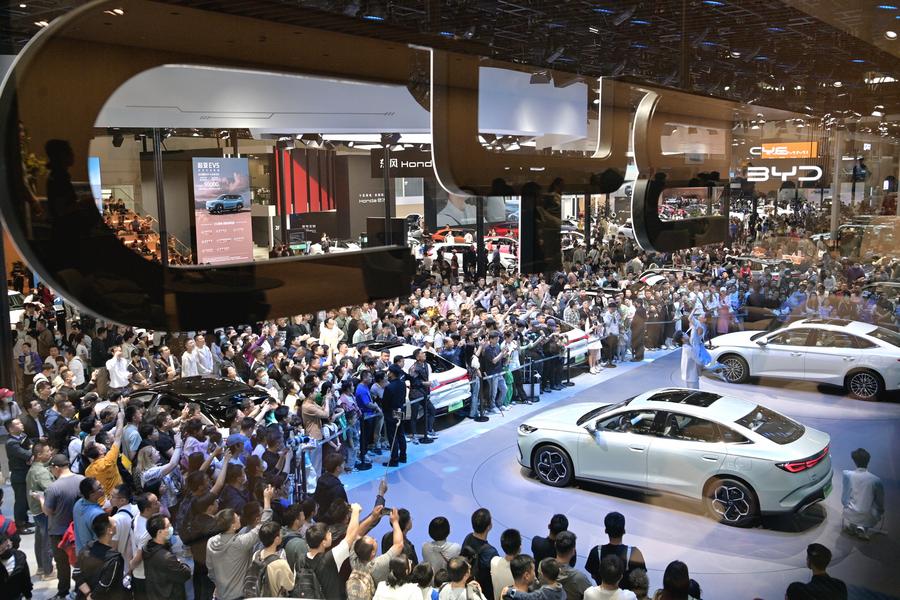Editor’s note: John Gong is a professor at the University of International Business and Economics in Beijing, China. The article reflects the author’s views and not necessarily those of CGTN.
With 10 countries in favor and five against, while 12 abstained, the European Union (EU) finally voted to approve tariffs on Chinese battery electric vehicles (BEVs) exported to the European market. The tariffs range from a low of 7.8 percent to about 35 percent for some Chinese automakers.
It is worth noting that the 10 countries that voted for the tariffs include France and Italy, whose auto industries feel most threatened by Chinese exports, as well as Poland and three Baltic States who haven’t been all that friendly with China in recent years. The new levies are expected to go into effect by October 31.
The EU’s argument is based on a new concept of state aid, called Foreign Subsidy Regulation (FSR) that is totally not initiated at the World Trade Organization (WTO), but instead unilaterally initiated by the EU.
The WTO does have a treaty regarding countervailing measures to outlaw export-related state subsidies. The Chinese BEVs exported to Europe don’t enjoy any such subsidy and thus are totally legal under the WTO framework. But the EU has come up with a new concept, essentially tailor-made for China in my view, to fend off the kind of affordable green cars very much welcomed by European consumers.
The purpose is clearly to protect French and Italian legacy internal combustion engine (ICE) automakers who are having a difficult time competing with Chinese exports. What the FSR is targeting is the pre-production state subsidies related to research and development, establishing factories and other things prior to the production and export of products.
For example, local governments in China provide incentives to attract EV companies to operate from their cities. This is a common practice in many countries, including the United States. Another example is the billions of euros pumped into the Airbus development program by the a few EU countries to compete with American Boeing.

The exhibition area of Chinese new energy vehicle manufacturer BYD in the 2024 Beijing International Automotive Exhibition in Beijing, China, May 4, 2024. /Xinhua
Now the EU has come up with a scheme to unilaterally outlaw such practice by foreign governments though it itself has been doing this for decades. Furthermore, such prohibition runs squarely against the practices allowed in the Agreement on Subsidies and Countervailing Measures of the WTO. That is the reason why the official response from China’s Ministry of Commerce says the tariffs imposed are not in compliance with WTO obligations.
The auto industry is largely a political issue as it involves a lot of companies and a lot of employment within its value chain. The French and the Italian governments’ concerns for their auto industry are understandable. But this is an issue that can be resolved through cooperation by automakers on both sides just as German automakers Volkswagen and BMW did with their Chinese partners.
It seems there is still some room for working out a solution instead of living with these ugly tariffs. Reportedly both sides are still negotiating for some minimum car prices as a means to lessen the competitive pressure on French and Italian automakers. There have been such precedents in the solar panel industry.
If the negotiation is successful, the tariffs can be essentially bypassed. The fact that China’s Ministry of Commerce hasn’t announced retaliatory measures indicates there is still hope for a negotiated way out of this “tariff war” conundrum.
(If you want to contribute and have specific expertise, please contact us at opinions@cgtn.com. Follow @thouse_opinions on Twitter to discover the latest commentaries in the CGTN Opinion Section.)




